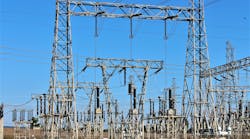While holistically defining the smart grid is a challenge, one area of interest is demand-response. In 2009, the Department of Energy announced over $4 billion in grant and project funding for the Smart Grid. A significant amount of this funding was allotted to utilities for cost sharing projects to deploy Smart Grid technologies, many of whom have deployed and are deploying advanced metering infrastructure (AMI).
AMI is an enabler to increase the efficiency of utilities and the bulk power grid. The bulk electrical system is unique in that it produces electricity as it is consumed. Most other industries have a delay between generation and consumption. This aspect of the power grid means that there must be enough generation capacity to meet the highest demand whereas other industries could over produce during off-peak times. This requires significant investment in generation capacity to cover the few days a year of peak consumption. Since bulk electrical storage doesn’t yet exist at scale another way to curb the need for new peak period generation is through demand-response; that is to incentivize consumers (demand) to curtail (respond) electrical usage during peak periods.
Of the various methods proposed for enabling demand-response, this paper will focus on the communication requirements for creating an energy market using transactional controls. More specifically, the paper will focus on the communication requirements needed to send the peak period notices and receive the response back from the consumers....(Read more...)

